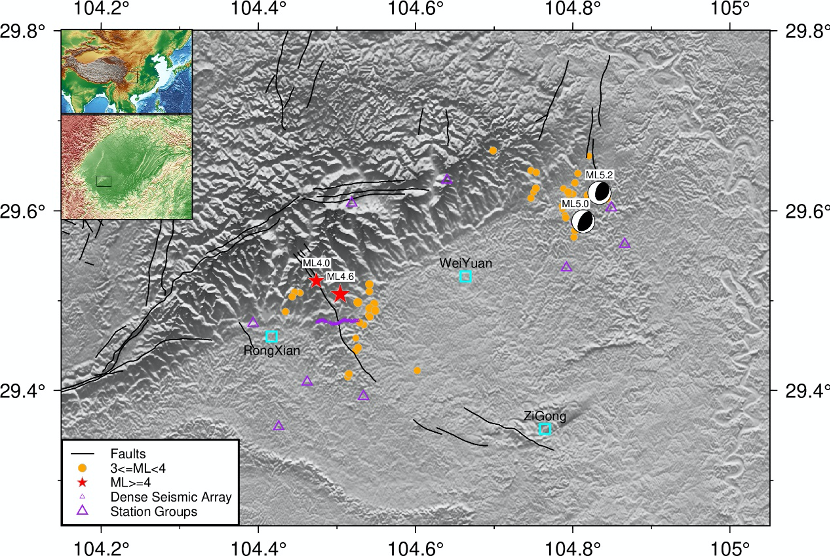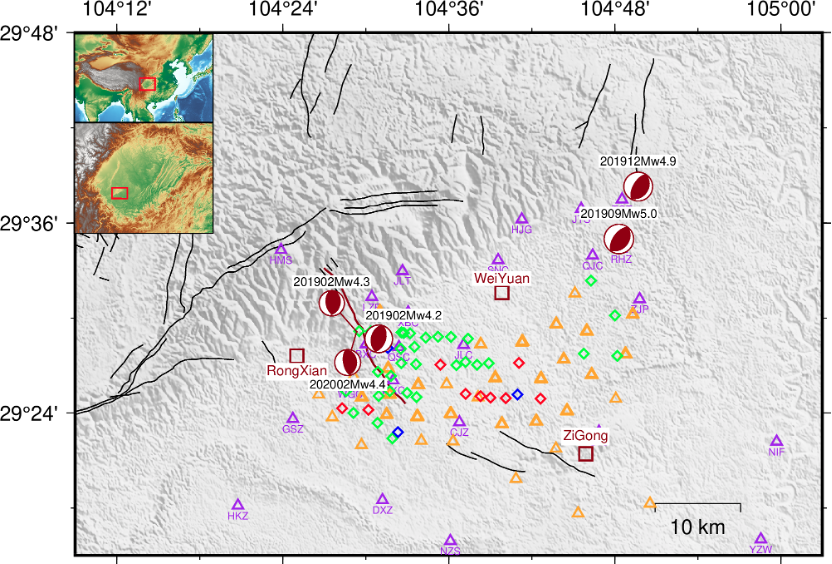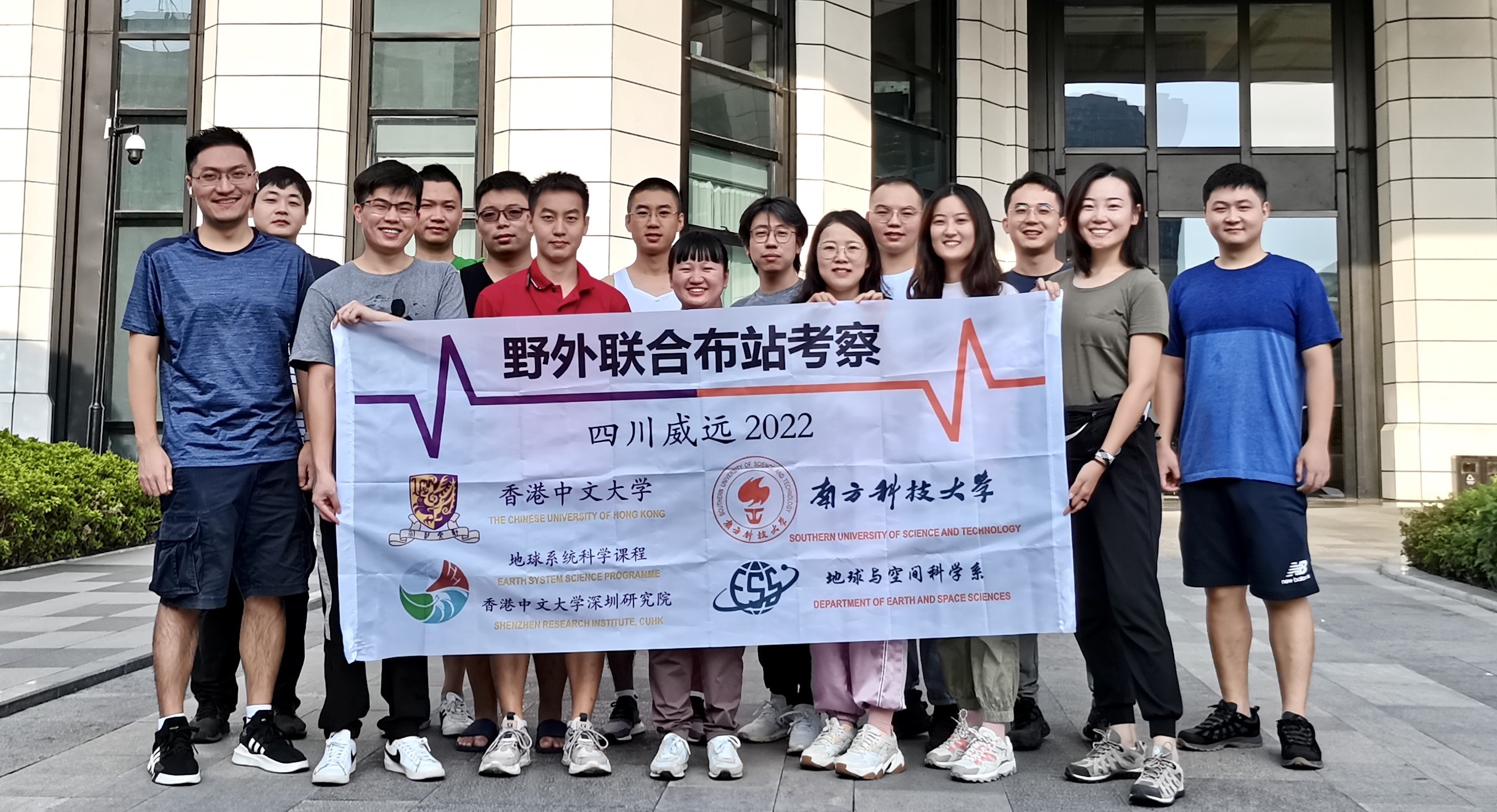FIELDWORK
Fieldwork in Anninghe, Sichuan Province, China (2019.10 – 2020.3)
Under the collaboration with USTC (the group led by Prof. Huajian Yao) and Institute of Geophysics, China Earthquake Administration (the group led by Prof. Baofeng Tian), we conducted fieldwork in Anninghe-Zemuhe fault zone which locates at the junction of the Chuandian block, the Bayanhar block, and the Southern China block. The Anninghe-Zemuhe fault zone is an important eastern boundary of the Chuandian block.
Due to the complex structural deformation and intense seismic activity on the Anninghe-Zemuhe fault, it is one of the key seismic monitoring areas in China. We deployed dense arrays and developed high-resolution imaging methods in order to obtain the structures of the sedimentary layer and the entire crustal in the region of the Anninghe-Zemuhe fault zone. Our station network deployed in Anninghe includes three linear arrays with spacing ranging from 50m to 80m and one 2-D array with a spacing of ~2km, in total 445 stations.
Fieldwork in Zigong, Sichuan Province, China (2020.4 -2020.6)
The Weiyuan shale gas block locates in Weiyuan county, Rongxian county, and Zigong city of the Sichuan province. With the rapid development of the shale gas industry in the Weiyuan shale gas block from 2015, local seismic activities significantly increased. In 2019, several destructive earthquakes struck the region, causing fatalities and injuries, and resulted in damages of houses and other facilities. In order to study the features of local seismic events and mitigate the hazards of earthquakes in this region, we deployed one temporal seismic network in the field of Weiyuan county and Rongxian county.
Our team arrived at Rongxian county on 15th April. In the later seven days, we deployed 120 seismograph devices, including one dense linear array (76 stations) with an average distance of 70 meters and ten scattered groups (four stations in each group). The purpose of the dense linear array is to monitor and study the structure of the Molin fault, where several ML>4.0 events occurred nearby in 2019. The aim of scattered groups deployed near shale gas exploration platforms is to collect data for analyzing the relationship between shale gas production and local earthquakes. The seismograph stations were deployed in the field for around two months. We revisited deploy sites and collected these devices in mid-June.

Map showing the location of the study region, the local tectonic setting, and observation sites.
Fieldwork in Zigong, Sichuan Province, China (2021.5 -2021.8)
We first collected locations of hydraulic fracturing platforms from satellite images and inferred platforms that might be under-fracking through the Sichuan Earthquake Agency earthquake catalog. We deployed 96 stations in the field, including 21 mini arrays and 14 scattered stations. After station deployment, we visited 66 hydraulic fracturing platforms to know their status. We find that there are 3 platforms under fracturing. The platforms that are going to be fractured are located in the center of our deployed network.
Xiaohuang Jiang, Jiangyang Zhang, Chunyu Liu, Suli Yao, and Jinping Zi deployed these stations in mid-May. Devices are recovered in mid-August by Chunyu Liu, Han Chen, Jia Zhang and Junhao Song. Due to the rainy weather in July and August, 35 stations are ruined due to water soaking. The weather also impacts the data quality as some stations suffer from time-drifting errors due to unstable GPS connections.

Fig. 1 Map view of the Weiyuan Shale Gas Field. Newly deployed temporary stations are marked by orange triangles. Purple triangles stand for local permanent stations. Green/blue/red diamonds mean post-/under-/pre- fracturing platforms
Fieldwork in Zigong, Sichuan Province, China (2022.8 -2023.2)
Under the collaboration with a group (led by Prof. WANG Ruijia) from the Southern University of Science and Technology, we conduct fieldwork to deploy seismic stations in Zigong, Sichuan, to monitor the seismicity around the Weiyuan shale gas field. Our group members, including two PhD students (Jinping and Juhao) and three postdocs (Jia, Jiewen, and Chunyu) are involved in this fieldwork.
The stations were employed in August 2023 and were recovered in Feb 2023.

Group photo taken during the field work